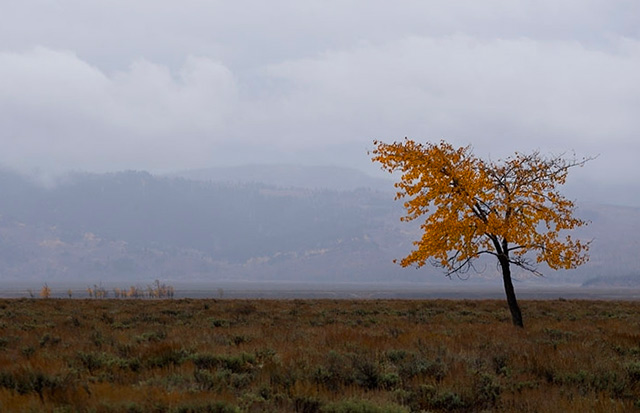
A show of solidarity with a subject and color within an overall landscape is another form of getting up close with nature. Is it really alone or are there other trees around the area? Let the viewer fill in the blanks with their own imagination.
When someone starts talking to you about portraits in photography, the first thing that enters your mind is head and shoulder photos of people. If you’re a hard core wildlife photographer, thoughts of close-up images of animals might come to the surface.
There’s another type of portrait image that can evoke a lot more thought and curiosity than either of these – portraits of our planet earth. These are the intimate photos that come in tight to show just a small part of the larger landscape scene and there are boundless interesting patterns that can be emphasized to show this beauty. Composition and working hand-in-hand with light, can bring these out even more.
I have a tendency to ‘look small’, at just a part of what’s in front of me, rather than the entire canvas that’s laid out for all to see. I have a friend with whom I go photographing who calls me the dentist, because I like to extract a small portion. My goal is to find something that represents what the overall area is like – reveal just a part of it. When people look at one of your photographs, your goal should be to have them zero in immediately on what attracted you to want to make the picture in the first place. This is where taking the portrait approach to nature and landscape photography comes into play.
The goal in earth portraits is to learn how to draw out the interest and add another dimension. This is what you want these types of photos to induce from viewers as well as from yourself. After all, you should be doing photography to please yourself rather than anyone else. If you like the resulting image, that’s all that matters. After that, if others like what you’ve created, then that’s the added bonus.
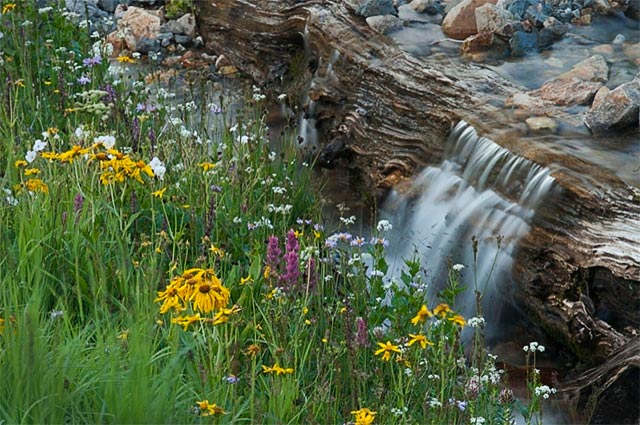
The eye can’t help but focus on this small, silky waterfall. How do we know it’s size? The viewer knows that the alpine wildflowers are relatively short in height. This small section of the earth allows the viewer to finish the story. It must be a beautiful meadow full of flowers with a meandering stream quietly running through it, or….
Freeman Patterson is probably one of the best at creating earth portrait photography. His mixing together of light and detail creates some wonderful intimate looks at the intricacies of the world in front of us. Taking the time to pull these out from the landscape is where each of us can find something inviting. And everyone’s photographic eye will be different. If you have a group of photographers and take each, one at a time, to the same spot and say, “I want you to ‘look small’ and capture the essence of what’s there”, everyone will come up with something different.
Simplicity is paramount in creating earth portraits. When there is a lot for the viewer to see and comprehend, then the feel of a portrait is lost. Think about these as you would when taking a portrait of a person. Human portraits are very simple. It’s a close head shot, utilizing light, shadows and details, to show the true character of the person. This technique also applies to a portrait of the earth.
And the good thing about doing earth portraits – there are subjects everywhere you go. Let’s say you have arrived at your planned location and conditions haven’t come together properly for your intended image. For instance, the autumn colors haven’t come forth to create hillsides of color – no problem. Find a couple of leaves and use them to create some nice compositions. Looking at the details of what’s available can open up an entire new world of endless possibilities.
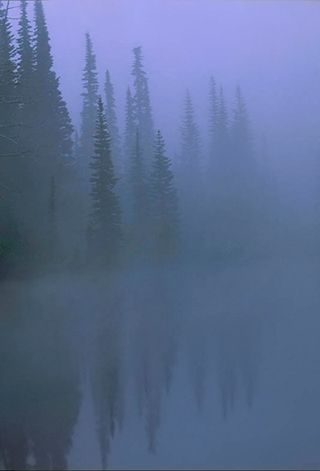
Utilizing fog produces an image that makes the viewer wonder what lies around and beyond what can’t be seen. It’s a great way to isolate your subject.
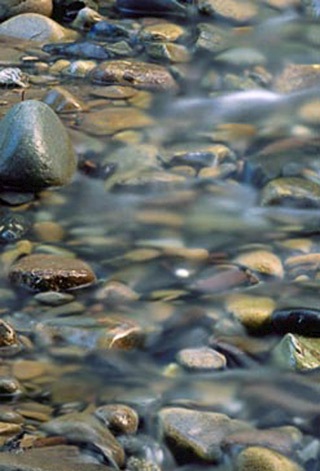
A long shutter speed creates a mystical feel to the water running over the rocks. The small area of the stream gives a feel for the entire stream.
Step out of the box and be creative when doing earth portraits. Looking at what’s in front of you fully in terms of shape, line and texture, instead of putting the whole puzzle together, allows both you and the viewer to want to know more about what’s there. You can get a better understanding of an area by examining parts of it.
Take the approach of being a research biologist as they enter an area for the first time. They start looking at individual items to see what new things they can find. The same approach can be taken with photography. What small, new subject can I find to photograph. How can I portray it in a way that is different or shows its uniqueness? This observational technique might take longer, but the results will be well worth the extra time, opening you up to an abundance of photographic opportunities.
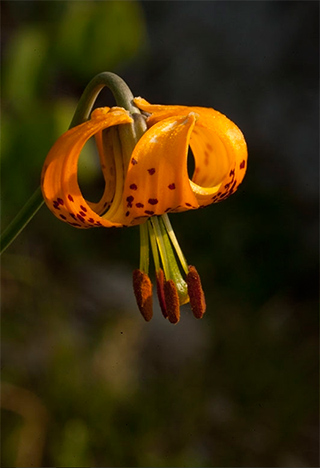
Strong contrast in color will make that close-up subject pop within the image frame.
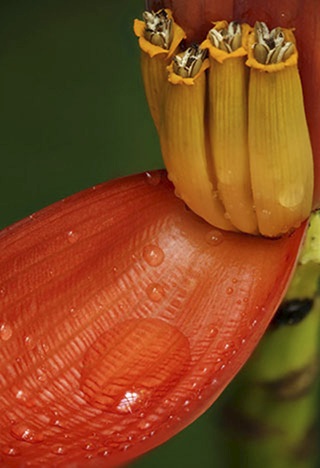
Going out after a rain storm is the perfect time to capture the details of rain drops on your favorite subjects in nature.
While most of the time these earth portraits are of a very small area, they can show a little wider area as well. What needs to be included in the composition, though, is a focus on its simplicity and beauty. If you don’t have a natural eye for picking out these small portraits, this is a good exercise to help you develop this skill.
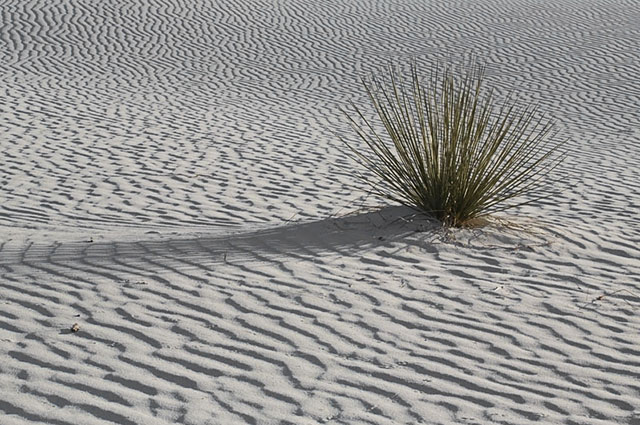
The tightness of the photograph gets the viewer’s eye looking at the details of the plant and ripples in the sand. The angle at which all was placed in the image frame, along with a low light angle not only provides some nice shadows, but carries the eye at a diagonal across the image frame, creating depth within the photo.
Some photographers have been blessed with a great photographic eye, while others have to work to find quality compositions. Being creative and taking the time to really look around for the earth portrait images that are deeper than the typical snapshot of an area will help in the development of an eye that sees, rather than an eye that looks.
by Andy Long
First Light Photo Workshops
All text & photos: © 2014 Andy Long. All rights reserved.

Leave a Reply